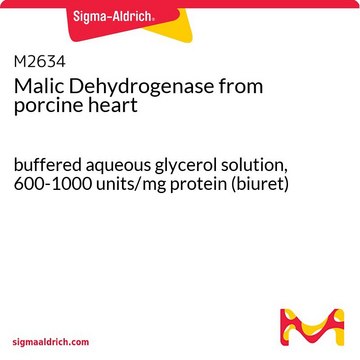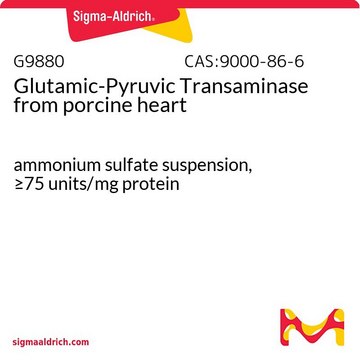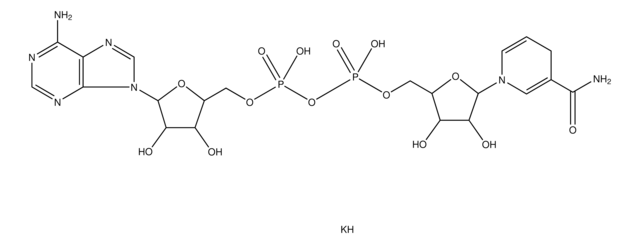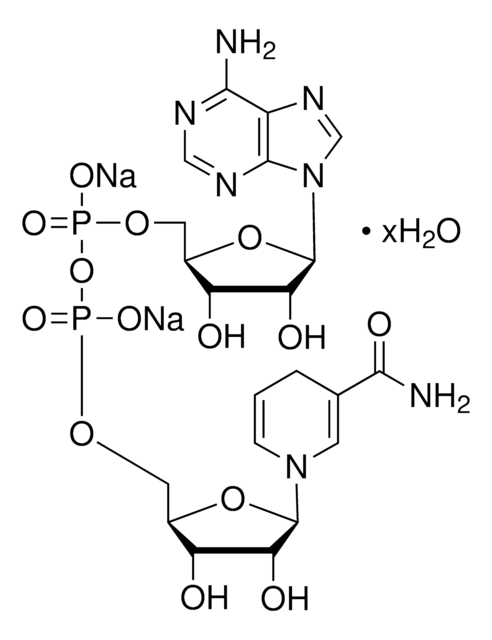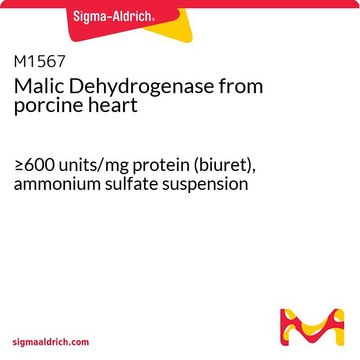G2751
Glutamic-Oxalacetic Transaminase from porcine heart
Type I, ammonium sulfate suspension, 200-500 units/mg protein
Synonym(s):
L-Aspartate:2-oxoglutarate aminotransferase, Aspartate Aminotransferase, GOT
About This Item
Recommended Products
type
Type I
Quality Level
form
ammonium sulfate suspension
specific activity
200-500 units/mg protein
foreign activity
glutamic-pyruvic transaminase ≤0.03%
lactic dehydrogenase ≤0.01%
malic dehydrogenase ≤0.01%
shipped in
wet ice
storage temp.
2-8°C
General description
Application
- in an enzyme-coupled assay for evaluating L-asparaginase enzyme activity
- in microtiter plate format enzyme-based assay to estimate malic acid content in berry samples
- as a supplement in homogenization buffers for the isolation of heart mitochondrial membranes in the presence of oxaloacetate (OAA)-depleting system
Biochem/physiol Actions
Unit Definition
Physical form
Analysis Note
Storage Class Code
11 - Combustible Solids
WGK
WGK 3
Flash Point(F)
Not applicable
Flash Point(C)
Not applicable
Personal Protective Equipment
Regulatory Information
Choose from one of the most recent versions:
Certificates of Analysis (COA)
Don't see the Right Version?
If you require a particular version, you can look up a specific certificate by the Lot or Batch number.
Already Own This Product?
Find documentation for the products that you have recently purchased in the Document Library.
Articles
Instructions for working with enzymes supplied as ammonium sulfate suspensions
Our team of scientists has experience in all areas of research including Life Science, Material Science, Chemical Synthesis, Chromatography, Analytical and many others.
Contact Technical Service

